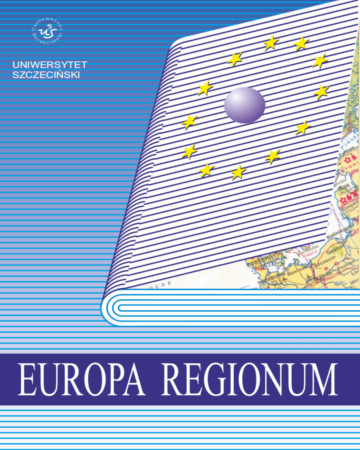
ISSN: 1428-278X
OAI
DOI: 10.18276/er.2018.36-05


Issue archive /
t. 36 2018
TRENDY W GOSPODARCE KRAKOWA W LATACH 2015–2017
(Krakow trends in the economy in the years 2015 –2017)
| Authors: |
Anna
Stec
Uniwersytet Ekonomiczny w Krakowie, Wydział Finansów i Prawa Konrad Sarzyński Uniwersytet Ekonomiczny w Krakowie, Wydział Ekonomii i Stosunków Międzynarodowych |
| Keywords: | location of enterprises economic development spatial analysis entrepreneurship |
| Data publikacji całości: | 2018 |
| Page range: | 17 (69-85) |
| Klasyfikacja JEL: | L11 M21 |
Abstract
The aim of the article is to assess trends in the economy of Kraków and to present spatial analyzes as a tool enabling precise diagnosis of economic development. Achieving it became possible thanks to the use of descriptive statistics methods and spatial analysis using GIS tools. Location data and the date of creation of new enterprises in the years 2015–2017 were used. We characterized newly established enterprises in Kraków based on the economic sector in which they operate, determine the profile of chosen locations, identify the most popular areas for new enterprises and explore the survivability of newly established enterprises. In the analyzed period there were positive changes in the city’s economy manifested in the increase in the share of highly specialized enterprises
Download file
Article file
Bibliography
| 1. | Bielak, R., Bieniek, M., Wojciechowska, E. (2009). Polska Klasyfikacja Działalności 2007 – wdrażanie i konsekwencje zmian. Wiadomości Statystyczne, 6, 27–40. |
| 2. | Dańko, I. (2006). Pijani Anglicy rozrabiają w Krakowie. Pobrane z: http://wyborcza.pl/1,75248,3498189.html (20.07.2006). |
| 3. | Fisher, A.G.B. (1939). Production, Primary, Secondary and Tertiary. Economic Record, 15 (1), 24–38. https://doi.org/10.1111/j.1475-4932.1939.tb01015.x. |
| 4. | Godlewska-Majkowska, H. (2013). Lokalizacja przedsiębiorstwa w gospodarce globalnej.Warszawa: Difin. |
| 5. | Maté-Sánchez-Val, M., López-Hernandez, F., Rodriguez Fuentes, C.C. (2018). Geographical |
| 6. | Factors and Business Failure: An Empirical Study from the Madrid Metropolitan Area. |
| 7. | Economic Modelling, 74, 275–283. https://doi.org/10.1016/j.econmod.2018.05.022. |
| 8. | Nowicki, M. (2015). Czy lokalizacja przedsiębiorstwa może sprzyjać przełamywaniu jego kryzysów rozwojowych? Marketing i Rynek, 5 (CD), 335–357. |
| 9. | PARP (2017). Raport z badania Global Entrepreneurship Monitor – Polska. Warszawa: Wyd. Naukowe ITE – PIB. |
| 10. | Rozporządzenie Rady Ministrów z 24.12.2007 w sprawie Polskiej Klasyfikacji Działalności (PKD). Dz.U. 2007, nr 251, poz. 1885. |
| 11. | Schemat klasyfikacji. GUS. Pobrane z: http://stat.gov.pl/Klasyfikacje/doc/pkd_07/pdf/2_ PKD-2007-schemat_2.pdf (27.08.2018). |
| 12. | Śleszyński, P. (2007). Gospodarcze funkcje kontrolne w przestrzeni Polski. Warszawa: IGiPZ PAN. |
| 13. | Tholons (2017). Tholons Services Globalization City Index. Pobrane z:http://www.tholons. com/Tholonstop100/TholonsTop100-2017v.7.pdf (27.08.2018). |
| 14. | Tymczak, P. (2018). Kraków. Mieszkańcy: Mamy dość pijanych turystów. Urzędnicy: Krakowianie też piją. Pobrane z: http://krakow.naszemiasto.pl/artykul/krakow-mieszkancy--mamy-dosc-pijanych-turystow-urzednicy,4381909,art,t,id,tm.html (19.01.2018). |
| 15. | Urząd Miasta Krakowa (2018). Kraków w liczbach 2017. |
| 16. | Venanzoni, G., Carlucci, M., Salvati, L. (2017). Latent Sprawl Patterns and the Spatial |
| 17. | Distribution of Businesses in a Southern European City. Cities, 62, 50–61. https://doi.org/10.1016/j.cities.2016.12.008. |
| 18. | Zajdel, M. (2007). Trójsektorowa struktura gospodarcza w Polsce jako miernik rozwoju (wybraneaspekty). Nierówności Społeczne a Wzrost Gospodarczy, 11, 419–430. |